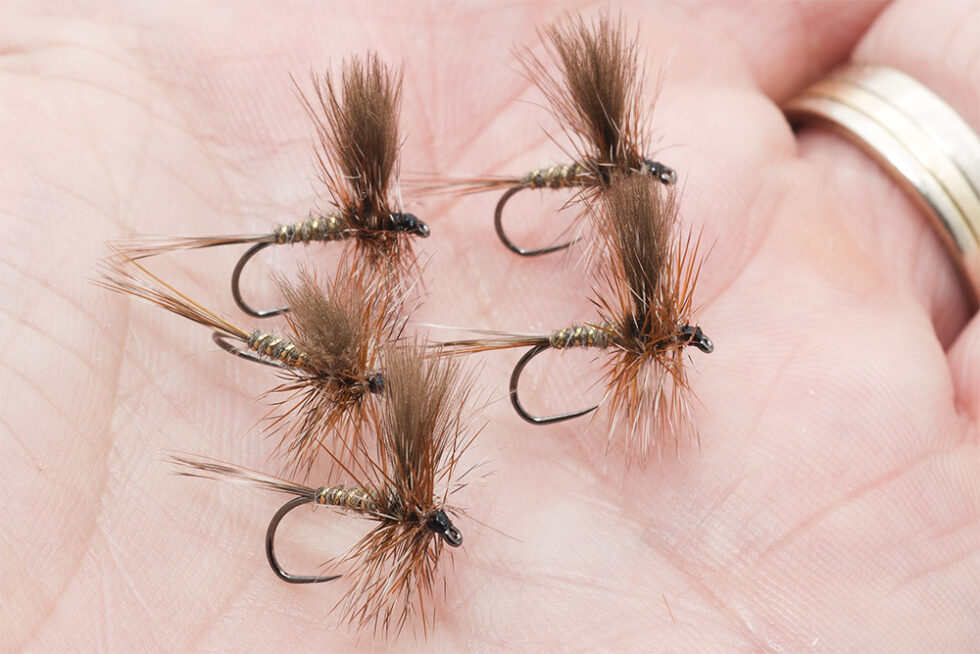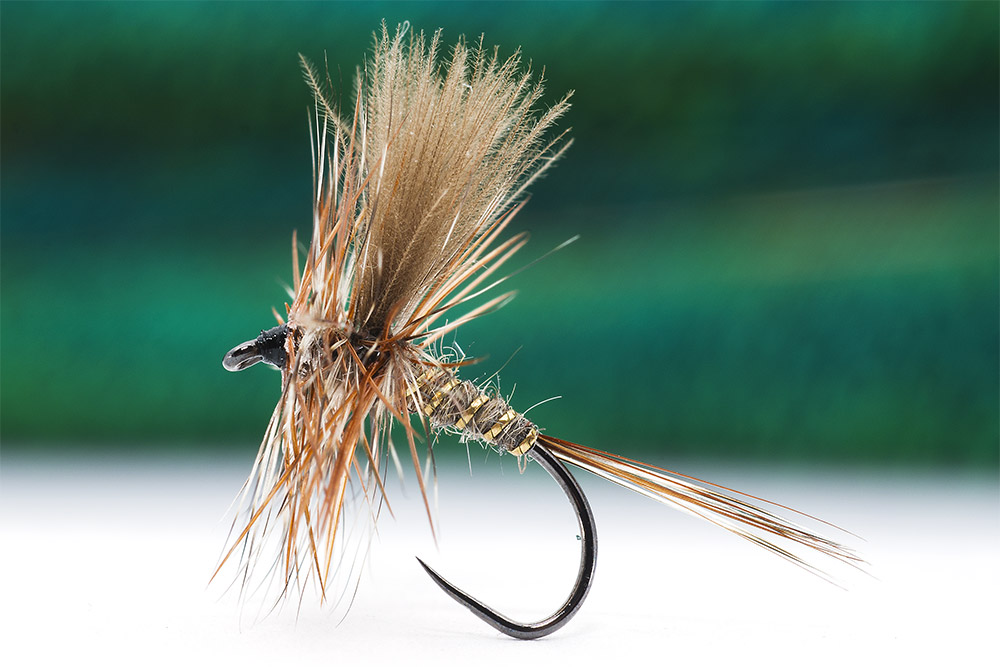
For over a century, the Adams Dry Fly has been a cornerstone in the fly fisher’s arsenal. Its simple design and remarkable effectiveness have earned it a place of legend among both seasoned anglers and those just starting out.
A Timeless Tradition:
Developed in the 1920s, the Adams Dry Fly owes its origins to Leonard Halladay and Charles Adams. While initially conceived to imitate a specific mayfly, its versatility and ease of use propelled it to become a universal favorite.
Adams Design:
- Simple and effective: Made with readily available materials, making it a good fly for beginners to learn to tie.
- Gray dubbing body: Represents the general body color of many mayflies.
- Grizzly hackle: Provides buoyancy and creates a silhouette that mimics the legs and wings of a struggling mayfly.
Variations:
- The original pattern used wood duck flank feathers for the tail, but many tiers now use dun hackle fibers for a simpler construction or a mixed brown and grizzly fibers
- Some tiers use different colored dubbing or hackle feathers to imitate specific mayfly species.
Simple Yet Effective:
The beauty of the Adams Dry Fly lies in its uncomplicated design. A gray dubbing body acts as a blank canvas, representing the general body color of many mayflies. A grizzly hackle, the feathery crown of the fly, provides buoyancy and creates a silhouette that mimics the legs and struggling wings of a hatching insect. Despite its classic design, the Adams Dry Fly offers room for customization. Many tiers substitute the traditional wood duck flank tail with simpler dun hackle fibers. Additionally, variations in dubbing color and hackle selection allow you to tailor the fly to imitate specific mayfly species you encounter on your fishing adventures.
This was about Adams Dry Fly, a bit of tradition and history. Now here is my version, more practical for me, I hope you like it:


April 10, 2024
HI Lucian, a simple observation, question and advice, since you made a slight variation to the original, why not also mount the hackles in the parachute to make it more current?
Cheers.
Emanuele
April 10, 2024
Hi Emanuele,
Thank you for your comment.
I did that, is somewhere published 🙂
April 10, 2024
Parure selon Dike Smedley et John Falk
Hameçon: sèche 12 à 18 (jusqu’à 28 dans certains ouvrages)
Queue: deux barbes de plume de cou de faisan doré
Corps: laine grise
Collerettes: une plume de cou de coq brun et une plume de cou de coq grizzly
Ailes: pointe de plume de cou de coq grizzly légèrement couchée vers l’avant.
April 11, 2024
Bonjour Patrick,
Oui, il y a beaucoup de changements au fil du temps :).
Merci pour les spécifications!
Cordialement,
Lucian